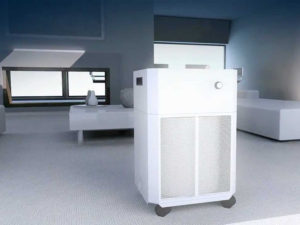
Factsheet
Air purifiers
Air purifiers can be effective in removing allergens, irritants and gases from the air. These include:
- Particulate matter, such as pollen, pet dander, mould spores and dust mite allergens
- Gases including smoke and volatile organic compounds (VOCs), such as pollution and fragrances
Most purifiers have between three and five levels of filtration. The two most important filters to look for are:
- A high-efficiency particulate air (HEPA) filter, such as a H13 HEPA filter which filters 99.97% of particles above 0.3 micrometres from the air, and
- An activated carbon filter, in either powder or granular form to absorb gases and volatile chemicals.
Purifiers may use extra technologies and filtration systems. When used together with both a HEPA and activated carbon filter, they can assist in further removing or neutralising contaminants. Additional systems may include:
- Pre-filters designed to remove larger particles, such as pet dander, before the air moves through the HEPA filter
- The use of heat, electron discharge or ultraviolet light to neutralise contaminants such as bacteria
- Ioniser technology which electrostatically charges particles in the air or emits negative ions to assist in removing bacteria and viruses from the cleaned air
The effectiveness of air purifiers will depend on:
- The amount of air processed
- Quality of construction
- Size, quality and age of filters
- Maintenance of the machine
- Size of the room or area
- Rate of air exchange
What you can do
If you’re thinking about buying an air purifier, also consider:
- The best HEPA filters used in purifiers are designated E12, H13 or H14
- Consider the allergen size. Smaller particles can remain airborne for longer, while larger particles like dust mite faecal matter and pollen will fall quickly to the ground in still air
- Some purifiers emit ozone. International ozone emission concentration limit recommend air purifiers does not exceed 0.050 parts per million (ppm), Sensitive Choice requires approved partners air treatment devices to be under 0.005ppm
- Fragrances do nothing to purify the air and some people are allergic to some fragrances
- Machines that increase humidity should only be used in dry climates – higher humidity promotes mould growth and dust mites
- A purifier will have much less benefit in a large room with frequently opened doors and windows than a smaller better sealed room
You can find Sensitive Choice approved air purifiers here.


